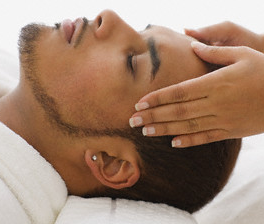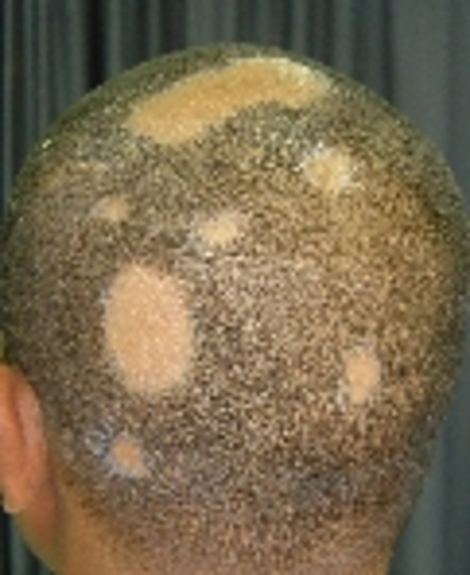Archive for September, 2009
Sunday, September 20th, 2009
Hair removal has been practiced in different ways and can be achieved with either temporary or permanent relief. From regular razor trimming, waxing, electrolysis, and advanced laser hair removal these procedures do the job and do them well. As of recent, we had a patient ask us of a different method of hair removal. He was considering using follicular unit extraction (FUE) procedure to achieve this.
“Instead of placing the hair follicle in my scalp, can the extractions be disposed?” His goal was to remove unwanted facial hair quickly and permanently. This is actually a possibility for almost any person who does not want to have a hair transplant procedure, per say. We recommended that the patient at least be evaluated through FOX test to see if the hair grafts can be removed entirely through FUE. This means the grafts have to come out whole after making the FUE incision.
If the hair graft units cannot be extracted whole through FOX test, then the procedure will not be effective. The reason why the hair graft must come out whole is to prevent leaving the bulb in its place. If the bulb remains then the hair shaft may continue to grow normally. A fully extracted graft unit can then be replaced (or disposed).
Tags: follicular unit extraction, fox, fue, FUE hair transplant, FUE transplant, hair loss treatment, laser, laser hair removal, scar
Posted in Uncategorized | No Comments »
Tuesday, September 15th, 2009

As with any surgical procedure, you would have to worry about certain side effects or tedious maintenance. We are asked by every potential surgical patient, “When can I go back to work after my hair transplant surgery?”
Downtime doesn’t only apply to the amount of time you would spend away from your office or how soon you can return. This all depends on the type of work that you do, whether or not you can use a hat, how sensitive the issue of your hair transplant is and whether or not you want to keep it a secret.
We have a few follow up dates after the hair transplant surgery in our California Hair Transplant Offices and each must be completed. On the day after surgery, all patients must have a hair wash done in office to best instruct the patient. We make sure to clean the patient as thoroughly as possible without damaging the hair grafts in a professional and comfortable manner. We make sure the patient understands that scabbing and redness must be dealt with as soon as possible.
Patients are most concerned about how they will look the first few days. Redness and swelling are the most common side effect of the surgery and can last 4-5 days after the surgery. Patients can choose to wear a hat to cover the transplanted area from plain site.
On larger hair transplant cases, the swelling may actually progress to the eyebrow area or even the eyelids and under eyes. 5 to 6 days is all it should take for this kind of swelling to go down, generally. The swelling is most always triggered by large (2500 graft surgery) or mega-session (3000+ graft surgery) procedures but is almost undetectable on smaller cases.
The final concern or issue after hair transplant surgery is the visual aspect of the existing hair. Most cases, we trim the hair in both the recipient and donor area (0.5 to 2cm) and it will stay at about that length for 2 to 3 weeks. In about 90% of patients that undergo surgery, the transplant hair will fall out within the first 3 weeks. This means will look like they did before hair transplant surgery. By this point, there should not be any swelling or redness. Staples and/ or sutures are removed in less than 2 weeks after surgery and the transplanted hair follicles will then go into their resting phase until they are ready to grow again.
Tags: after hair restoration surgery, after hair transplant, complications, hair transplant, hair transplant surgery, high grade baldness, Los Angeles Hair Transplant Center, low grade baldness, male patterned hairloss, men hair loss, redness after hair transplant, swelling after hair transplant, us hair restoration
Posted in California hair transplant, hair transplant | No Comments »
Tuesday, September 8th, 2009

We understand people like to pamper themselves. A patient of ours wrote to us regarding a scalp and body massage. He had his hair transplant surgery in our Encino Surgical Office almost 8 months ago and asked, “Would get a head massage risk loosening the implants?” He also wanted to know if that would help increase circulation to the grafts and improve growth.
Hair that has been transplanted over 3 months ago and is growing normally is considered permanent and cannot be dislodged from your scalp. The main concern is in the first weeks of a hair transplant surgery when the hair is still settling in. Even so, some cases where the hair is removed the active part of the follicle may still remain and a new follicle will grow shortly after. At this point, hair cannot be harmed.
However, there is no proof that a scalp massage to increase scalp circulation is proven to increase the quality of existing or newly transplanted hair. More so, it has also not been proven that lack of blood circulation or oxygenation in scalp will cause hair loss.
Tags: after hair transplant, complications, Encino hair transplant, hair loss treatment, hair transplant surgeon, hair transplant surgery, hair transplatation, male patterned hairloss, men hair loss, scalp massage, scalp massage after hair transplant, us hair restoration
Posted in Uncategorized | No Comments »
Saturday, September 5th, 2009
 Alopecia Areata (AA) is an autoimmune hair loss condition. It presents itself in the form of patchy hair loss on the scalp or other areas where hair exists. Some have questioned if AA can also be triggered by emotional stress. It has been discussed in some medical journals but the exact mechanism has never been explored. There has been a study conducted and published on the relationship between stress and the pathogenesis of alopecia areata. This was done by subjecting AA-affected and normal lab mice to ether anesthesia (stress) through restraining the animal. Alopecia Areata (AA) is an autoimmune hair loss condition. It presents itself in the form of patchy hair loss on the scalp or other areas where hair exists. Some have questioned if AA can also be triggered by emotional stress. It has been discussed in some medical journals but the exact mechanism has never been explored. There has been a study conducted and published on the relationship between stress and the pathogenesis of alopecia areata. This was done by subjecting AA-affected and normal lab mice to ether anesthesia (stress) through restraining the animal.
The mice with alopecia areata had a marked increase in hypothalamic-pituitary-adrenal tone and activity centrally and peripherally in the skin and lymph nodes. Plasma corticosterone, adrenocorticotropic hormone, and estradiol levels were determined in this study as indicator or stress level, whereas gene expression in brains, lymphoid organs, and skin was measured by quantitative RT-PCR for corticotropin-releasing hormone, arginine vasopressin, proopiomelanocortin, glucocorticoid receptor, mineralocorticoid receptor, corticotropin-releasing hormone receptor types 1 and 2, interleukin-12, tumor necrosis factor-alpha, and estrogen receptors type-1 and type-2.
Compared to normal mice, there was an altered interaction seen between the adrenal and gonadal axis proving that the stress level in those animals was in fact higher. Stress also caused changes in the activity of the hypothalamus pituitary axis in the mice with AA.
In addition, animals with AA had significantly blunted corticosteroid and ACTH responses to acute ether stress (physiological stressor) and a deficit in habituation to repeated restraint stress (psychological stressor). These findings further suggest that altered brain responses caused by stress may be associated with the occurrence of alopecia areata, proving the hypothesis that stress plays an important factor.
Treatment of AA is done through observation of the patient and, in some cases, steroid injections can also prove useful. These treatment options have shown some improvement in those who have extensive types of AA like Alopecia Totalis. We do not recommend any patient to get hair transplant surgery if they have active AA since the chance of losing the newly transplant hair is very likely.
Although AA is not genreally treated with hair restoration, we at our offices of US Hair Restoration in LA, BH and Orange County visit and treat patients of AA in a regular basis.
Tags: AA, ACTH, adrenocorticotropic hormone, alopecia areata, alopeica totalis, arginine vasopressin, Avp, CORT, corticotropin-releasing hormone, estradiol, glucocorticoid receptor, hair loss, hair loss innovations, hair transplant, hair transplant surgery, lymphoid organs, mineralocorticoid receptor, proopiomelanocortin, RT-PCR, sress level
Posted in Beverly Hills hair transplant, California hair transplant, Los Angeles Hair Transplant, Orange County hair transplant | No Comments »
Tuesday, September 1st, 2009
We’ve been asked many things during a regular consultation with one of our patients. There is one that I hear more about on the side of the cost of hair transplant: “Can we use hair from anywhere else other than the back and sides of the scalp?” our hair transplant surgeon says, “Hair can be harvested from almost any part of scalp or body that grows hair and it can be transplanted to any part of the skin.” This is really not an unusual thing for any hair transplant surgeon to do. This is considered a last resort for patients who do not have sufficient donor hair on their scalp or for those whom have had old technique hair transplant procedures that have violated the donor area.
As we stated, any hair that grows on your body can be used for hair restoration surgery but the scalp donor hair is regarded as the best option when it comes to hair quality. Compared to most body hair, scalp hair has a much longer growth phase (Anagen phase; grows for as long as 1-6 years) and a much shorter resting phase (Telogen phase; hair dies in 4-6 weeks). It is also the most economic choice since there is a much higher density and does not require special techniques to harvest the grafts.
Body hair, however, has an almost reversed growth and rest phase. Body or pubic hair grows for about a few months or less and switches to a long resting phase. This is why pubic hair only grows to a certain length. There have been limited studies that have shown that body or pubic hair can change their inherent characteristics and even increase its growth phase when transplanted to the scalp. The research is insufficient and is still ongoing.
We’ve successfully transplanted pubic hair on select patients. One in particular did not have sufficient donor hair for his procedure due to a violated donor area and miniaturization. We took what we could from the back of his scalp to restore his hairline and harvested pubic hair to reinforce the crown.
The key idea is that there really is no limit to hair restoration surgery. If the patient is lacking in donor hair or requires a large number of hair grafts, pubic hair may be a viable option. Of course, we will evaluate the quality of the donor hair first before considering any other options. A good hair transplant surgeon can determine your candidacy and explain the options available to you prior to any form of surgical hair transplant treatment.
Tags: anogen, body hair transplant, good hair transplnt doctor, hair growth phase, plug surgery, pubic hair, pubic hair transplant, telogen
Posted in Uncategorized | No Comments »
|
|



